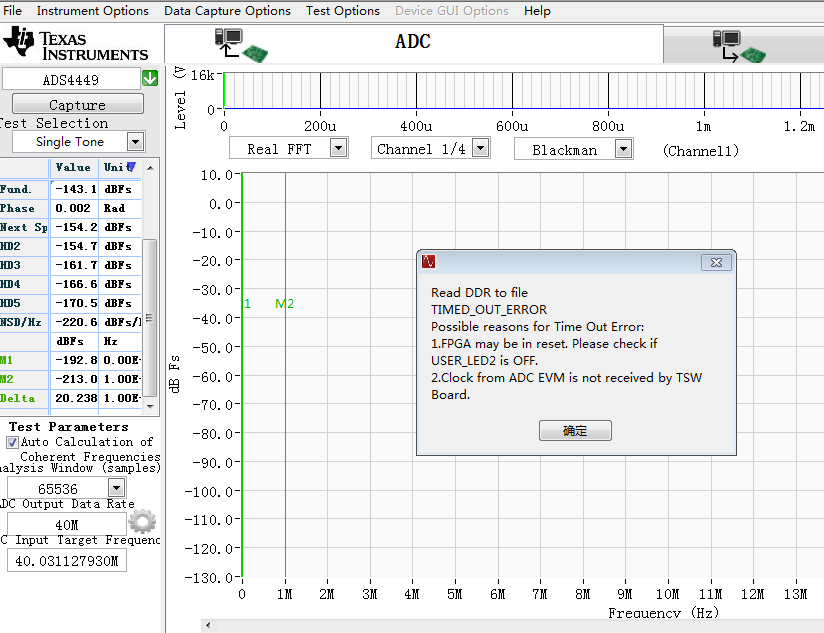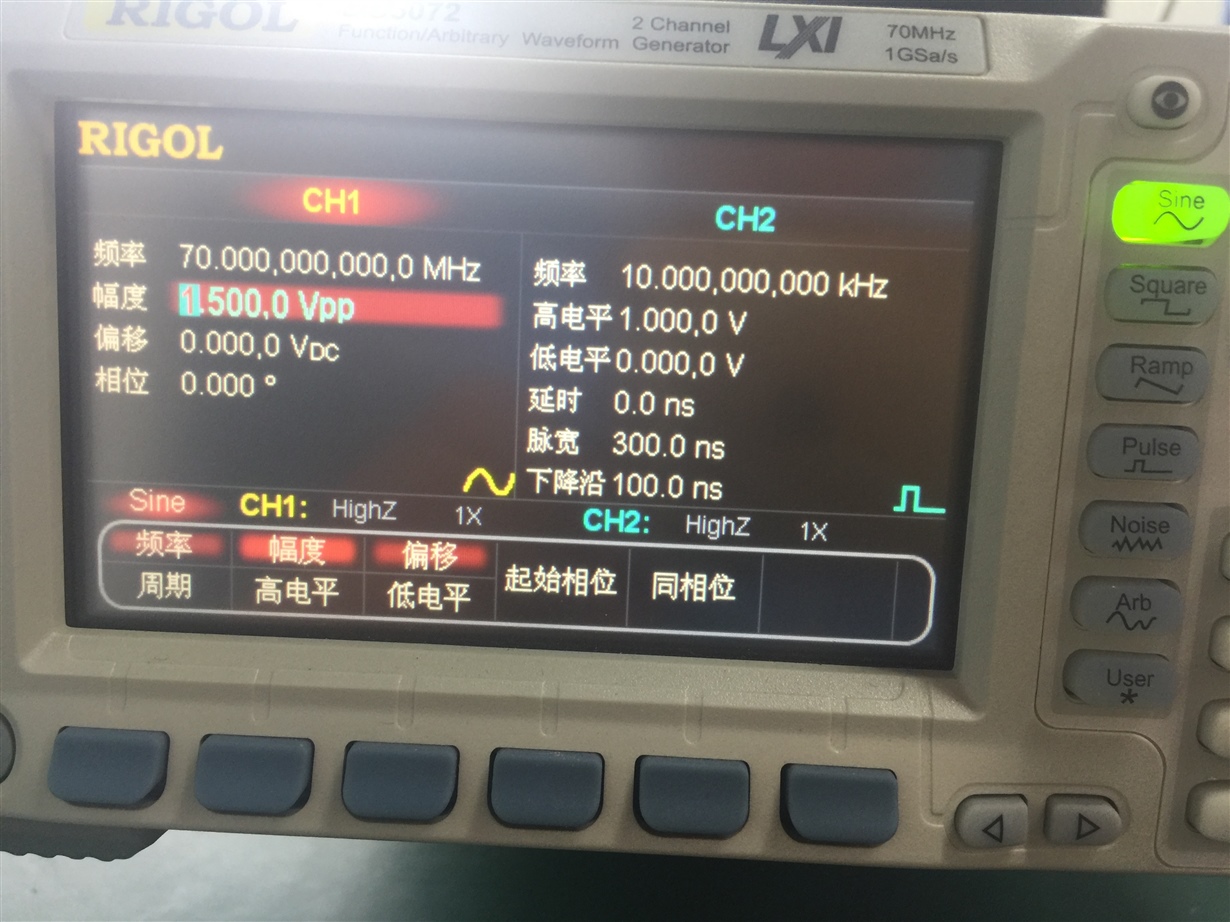Part Number: TSW1400EVM
Tool/software: WEBENCH® Design Tools
Dear TI expert:
I am investigating TSW1400 for ADC (ADS4449 EVM)data capture.
TSW1400 is now linked to the HSDC .
When I select ADS4449 in the upper left corner of the HSDC panel, I am prompted to download the firmware. “Do you want to update the Firmware for ADC” .I chosed"Yes." At this point, another dialog prompt did not find the firmware.
Question1 : where can I find the firmware of the TSW1400 corresponding to ADS4449 ?
If I press down the SW6 of TSW1400 EVM at the same time when update the firmware,it is OK.
Question 2.Is this the right way to operate?
I sample the J10 40MHz 1.5Vpp sine clock for ADS4449 EVM, and then give the ADS4449 EVM's J6 10MHz 1.0Vpp sine wave.
When I click the capture button, an Error reported in the attached picture.
So, what's going on here?










